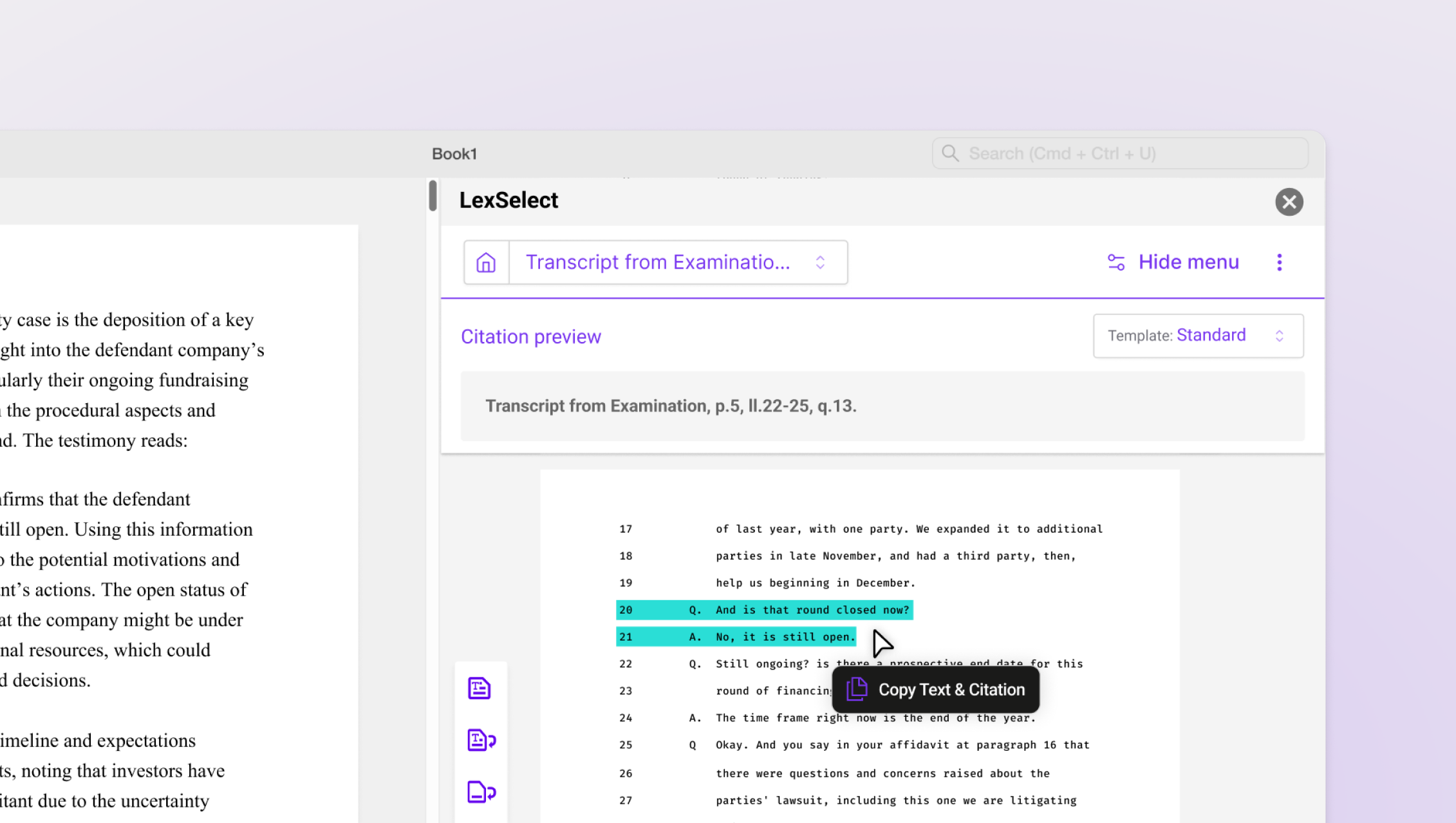
What makes copying text from a PDF to Word so hard?
Copying text from a PDF to a Word document can be frustrating—fonts and margins don’t match your Word document, line breaks appear mid-sentence, and even headers or footers are copied across pages. To understand why this happens, it’s important to know how PDFs work.
PDF files are designed to preserve the original layout and formatting of a document, ensuring they look consistent no matter where they are viewed. However, this same feature makes extracting text tricky. PDFs store text in independent layers or objects that are unrelated to one another, making it difficult to extract continuous text without disrupting its flow in Word.
Moreover, PDFs often contain more than just text. Embedded images, charts, and other non-text elements can complicate the extraction process, often requiring manual adjustments. If a PDF has been scanned or is of poor quality, additional challenges arise. Scanned PDFs, for example, are essentially images, which require Optical Character Recognition (OCR) to convert them into editable text.
OCR tools have improved significantly, but they are not infallible. Text from low-quality scans or documents with complex layouts may contain errors or lack structure, resulting in time-consuming cleanup. Additionally, copying and pasting text directly from a PDF to Word often leads to mismatched fonts, line breaks, and inconsistent formatting.
The process of copying and pasting text from a PDF can lead to issues with formatting. This may cause the extracted text to appear different in your Word document than it did in the original PDF, with variations in font, spacing, and alignment that can get in the way of your productivity.
Copy and paste text from PDF to Word
Copying and pasting text directly is the simplest method, but it requires manual reformatting. Here’s how it works:
1. Open your PDF file and select the text you want to copy.
2. Right-click and choose “Copy,” or use the keyboard shortcuts Ctrl+C (Windows) or Command+C (Mac).
3. Open your Word document, navigate to the desired location, and right-click to select “Paste,” or use Ctrl+V (Windows) or Command+V (Mac).
Once pasted, the text will likely need adjustments to match your Word document’s formatting. This includes fixing font sizes, removing unwanted line breaks, and aligning paragraph margins.
While this method doesn’t require additional software, it can be tedious if you’re copying text frequently or working with lengthy PDFs. Formatting inconsistencies often turn this simple task into a time-consuming hassle, particularly for users who need to extract text regularly.
Copy text from scanned PDF
Scanned PDFs present additional challenges because they are saved as images rather than editable text. To extract text, you’ll need OCR technology. OCR software interprets the image in a scanned PDF and converts it into selectable text.
Popular PDF viewers, like Adobe Acrobat, include built-in OCR tools. These tools allow you to convert scanned images into editable text that can be copied and pasted into Word. However, OCR technology often struggles with poorly scanned documents or complex layouts, resulting in misaligned text or errors.
Why does this happen? OCR software processes text as individual characters without fully understanding the document’s structure, such as paragraphs or logical flow. This lack of context leads to issues like line breaks mid-sentence or misplaced text elements. If you rely on OCR, be prepared to spend time reviewing and correcting the output.
Use online PDF to Word converters
Online PDF to Word converters simplify the process by automating the conversion. These tools allow you to upload a PDF and download a Word document with the text extracted. Platforms like Zamzar are popular options for one-off conversions.
While these tools are convenient, they often fail to resolve formatting issues like inconsistent line breaks, misplaced fonts, and misaligned text. These problems require manual cleanup in Word, which can negate the convenience of the initial conversion. For users who work with PDFs regularly, this method can also become cumbersome, as each document requires individual conversion.
If you need a fast, occasional solution, online converters are a good option. But for anyone working with PDFs frequently, other tools may be more efficient.
Use third-party software
Third-party tools like Adobe Acrobat Pro and LexSelect offer advanced capabilities for copying text from PDFs to Word. These tools are designed to handle complex PDF structures, ensuring text and formatting are transferred accurately.
For example, Adobe Acrobat Pro provides robust editing features but requires manual adjustments for heavily formatted documents. On the other hand, LexSelect automates not only text extraction but also formatting adjustments, ensuring a frustration-free workflow. Additionally, LexSelect allows users to generate citations automatically from extracted text, making it especially useful for legal professionals who frequently work with citations and references.
With LexSelect, you can extract text from any PDF—whether scanned or standard—and seamlessly transfer it to Word without disrupting your workflow. Unlike general-purpose tools, LexSelect is tailored for precision and efficiency, eliminating the need for time-consuming corrections.
Which option is best for you?
The right solution depends on your needs:
• For quick, one-off tasks, copy-pasting or online converters might suffice.
• If you regularly extract text and need consistent formatting, third-party software like LexSelect offers a streamlined and reliable approach.
Get Started with LexSelect
Ready to simplify your workflow? Try LexSelect for free today and discover a faster, easier way to work with PDFs. Create your account now and experience how easy it is to extract and format text with precision.
